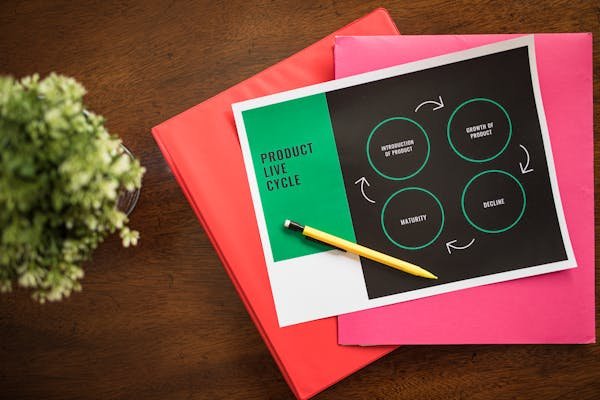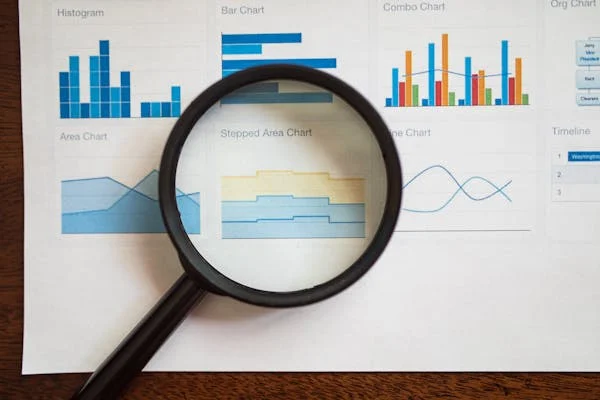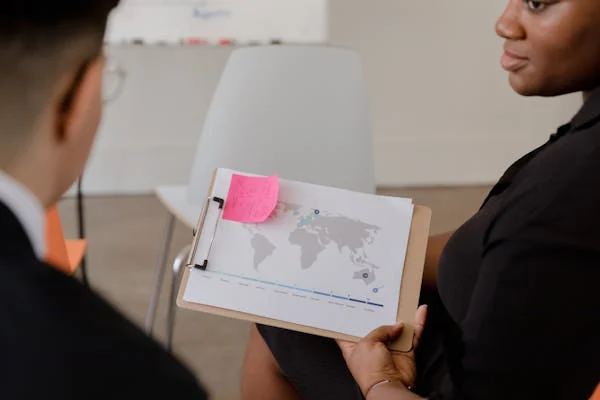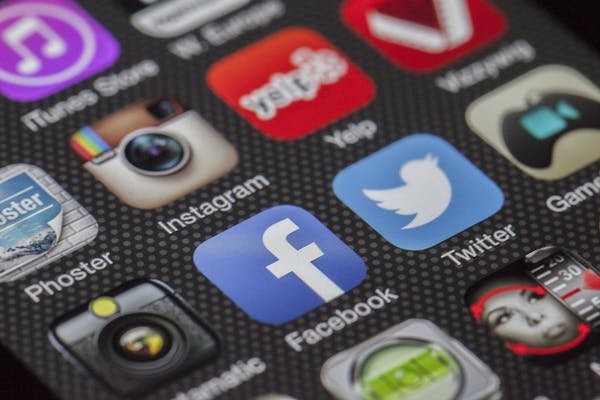When it comes to SaaS success, getting someone to start a trial is only half the battle. What really matters is whether they stick around. Retention is everything. But how long should your free trial be to maximize retention? A few days? Two weeks? A month?
1. SaaS products with 14-day trials have a 65% higher conversion rate than those with 30-day trials
Why shorter trials often work better
It sounds counterintuitive. Give people less time and they’re more likely to convert? But that’s exactly what the data shows. When users have 14 days instead of 30, they engage more urgently. There’s a psychological pressure to try the product properly and make a decision quickly.
A 30-day trial sounds relaxed—but that’s the problem. People put it off. They say, “I’ll get to it later.” That “later” often becomes “never.” By day 10, their interest fades. And by day 30, they’re gone.
What happens in the first week matters most
The majority of product engagement happens in the first few days. A 14-day window keeps that momentum going. The user journey feels more focused. Your onboarding can have a real arc: Day 1-3 is about value discovery, Day 4-10 is active exploration, and the final stretch is about converting interest into commitment.
Action steps
- If you’re currently running a 30-day trial, test a 14-day version. Use the same onboarding, same CTA flow. Track conversion, activation, and support volume.
- Use countdown timers and progress nudges inside the product. Remind users how many days they have left.
- Don’t just shorten the time. Support them more during the trial. Add daily tips, triggered emails, and live chat nudges.
Key takeaway
Urgency drives action. A 14-day trial strikes the perfect balance—enough time to explore, but short enough to avoid disengagement.
2. 7-day trials result in 30% lower retention than 14-day trials in B2B SaaS
Why 7 days is too short for most users
Seven days may create urgency—but it often creates stress. For B2B buyers, evaluating a product isn’t instant. They need time to gather internal approvals, involve other team members, or integrate with existing workflows.
A 7-day window puts pressure on decision-makers before they even understand the full value. They might create an account, click around for a day or two, then run out of time.
Hidden friction in short trials
Short trials also increase ticket volume. Users with limited time tend to reach out more because they don’t have time to explore. You’ll get more “how do I do this?” questions—not because the product is bad, but because the window is tight.
Retention drops because those who convert after 7 days are often not fully convinced. They buy out of pressure, then churn a month later.
What you should do instead
- Avoid defaulting to 7-day trials unless your product is super-simple or low-commitment.
- If you do offer a 7-day trial, provide a quick “upgrade to 14 days” button inside the app. Let engaged users unlock more time without contacting support.
- Track time-to-value. If it takes more than 3 days for someone to hit your key activation event, 7 days won’t cut it.
Key takeaway
Too little time hurts long-term engagement. In most B2B cases, 14 days gives users the breathing room they need to see value.
3. 21-day trials show 12% higher post-conversion retention than 14-day trials in productivity tools
Why some products need more time
For certain tools—especially ones that require repeated use or workflow setup—a 21-day trial lets users build habits. They don’t just test features. They integrate the product into their daily routine.
That’s especially true for productivity tools. To retain users, they must see how your tool fits their tasks. A 14-day window might be enough to explore, but not long enough to fully adopt.
When 21 days makes sense
If your product needs integration, team collaboration, or scheduled tasks, 21 days can give a better view. It helps users simulate a real month of work without hitting a wall mid-process.
This is also true for tools that rely on templates, imported data, or API connections. The setup takes time. Give users breathing space to complete it—and they’ll stick.
Tips for a successful 21-day trial
- Break the trial into three phases: exploration, usage, reflection. Trigger onboarding content to match.
- Offer mini-milestones. “You’ve completed your first workflow—great job!” Make it feel like progress.
- Use in-app analytics to personalize guidance after Day 7. What’s left undone?
Key takeaway
Some tools need more than two weeks to become part of the user’s life. A 21-day trial helps form those habits—and improves long-term retention.
4. Companies offering 14-day trials experience 19% higher activation rates than those with 30-day trials
The secret is focused onboarding
A shorter trial naturally leads to sharper onboarding. You can’t afford to let users wander. Every interaction matters. That creates a more intentional user journey.
Companies with 14-day trials often build better in-product experiences—because they have to. They use tooltips, walkthroughs, and milestones to help users hit value quickly.
And when activation increases, retention almost always follows.
Why 30-day trials lead to drift
With 30 days, companies tend to over-rely on email. Users log in once, leave, and get a weekly nudge. That’s not enough. They need to experience the value inside the product, not outside it.
Worse, longer trials encourage “I’ll figure this out later” behavior. Users never reach the activation moment—and never come back.
How to design for activation
- Define your “aha” moment and guide users there within the first 3 sessions.
- Use event-based emails (“You created your first project!”) rather than day-based emails (“Day 3 of your trial”).
- Avoid overloading the user. Focus on one clear goal per session.
Key takeaway
A shorter trial pushes you to prioritize onboarding—and that’s what actually drives activation.
5. Trials longer than 30 days have a 40% higher risk of user disengagement
More time doesn’t always mean more value
A longer trial sounds generous. But users don’t think, “Wow, 60 days!” They think, “I’ve got time—I’ll come back later.” That delay is deadly.
The longer the trial, the less urgency. The less urgency, the lower the chance they return. Even if your product is amazing, they won’t feel the need to keep exploring.
And when users disengage, they don’t convert. They churn mentally before the trial ends.
The myth of “longer is better”
Founders often assume a longer trial shows confidence in the product. That’s true—but only if people actually use the product. Engagement is what matters, not access.
The longer the trial, the higher the cost: more support, more inactive users, and more lost leads.
How to avoid disengagement
- Cap trials at 14 or 21 days. Offer extensions case-by-case.
- Trigger reactivation emails if a user goes inactive for 72 hours during trial.
- Use time-based CTAs: “Only 5 days left—try feature X today.”
Key takeaway
Don’t assume more time equals more conversion. Too much freedom leads to disengagement. Shorter trials force users to act—and that drives results.
6. 80% of users who convert after a 7-day trial churn within 3 months
Why short trials don’t build trust
When someone signs up for a product and is given just 7 days to decide, what’s their mindset? Often, it’s hurried. They might test one feature, skip the rest, and make a fast decision—maybe based on pressure or curiosity.
But that’s not how long-term customers behave. People who stay with a product for months or years are those who took the time to test it deeply, understood how it fit their workflow, and made a confident choice.
When someone converts after just 7 days, they’re often doing it half-blind. And that’s why they churn quickly afterward. They realize later the product isn’t the right fit—or they never fully learned how to use it.
What’s missing in 7-day trials
There’s no time to:
- Set up integrations
- Invite team members
- Try more advanced use cases
- Contact support and get answers
Without these steps, users buy on impulse. And impulse purchases are fragile.
Fixing short-trial churn
- Add post-trial onboarding. Just because someone paid doesn’t mean they’re fully activated. Keep supporting them for the next 30 days.
- Give trial users a checklist. Let them complete key actions that make them more likely to stay if they convert.
- Consider gating some features to post-trial. This helps extend the learning curve into the paid phase.
Key takeaway
Conversions from short trials can look great in dashboards—but lead to painful churn later. Don’t let urgency replace education.
7. Trial-to-paid conversion rates peak at 14 days, with a 28% average
Why 14 days hits the sweet spot
Too short, and users feel rushed. Too long, and they lose momentum. Fourteen days is enough for most users to explore, get value, and feel ready to commit.
It’s a clean window—two weeks. Easy to plan around. Teams can test internally, ask a few questions, and get approval within that span. For many SaaS products, that’s all it takes.
What drives the peak at 14 days
- Users still feel time pressure
- You can design a tight onboarding arc
- There’s enough time to see repeat value
It’s the Goldilocks zone: not too fast, not too drawn out. This structure helps your product shine without overstaying its welcome.
Boosting conversion at Day 14
- Use day 10–12 to show progress: “You’ve done X, Y, Z—ready for more?”
- Offer concierge setup or a quick 1:1 call at day 7. That builds confidence.
- Preload your checkout page with value reminders: what they’ve done, how far they’ve come.
Key takeaway
The best trial length often isn’t the longest—it’s the one that creates urgency while still giving enough room to explore. Fourteen days does that.
8. Freemium-to-paid retention outperforms trial-based retention by 15% over 6 months
Why free users stick around longer
A freemium model lets users stay in your world. They don’t face a ticking clock. They can return when ready, slowly integrate the product, and upgrade naturally.
While freemium users take longer to convert, when they do convert, they’ve already made your product part of their workflow. That’s why they retain better. They weren’t just trying it—they were already using it.
Why freemium isn’t right for everyone
It works best when:
- Your product has strong feature layers (free vs premium)
- You want mass market reach
- You can support large numbers of free users
It’s not ideal if your support or server costs are high per user. Freemium brings in many users who never pay. If that’s expensive for you, think twice.
Combining freemium and trials
Many SaaS companies offer both:
- Freemium for casual users
- Trial for high-intent users who want full access
This hybrid model gives you reach and revenue.
Key takeaway
Trials push urgency. Freemium builds loyalty. When users upgrade from freemium, they’re already long-time fans—and more likely to stay.
9. Adding 3 extra days to a trial boosts retention by 6% on average for PLG companies
Why flexibility improves outcomes
In product-led growth (PLG), users discover value on their own. They aren’t pushed by sales calls or custom demos. That means they need time—on their terms.
Sometimes, a 14-day trial feels like it ends too soon. The user was busy. They were exploring, but didn’t finish. Giving them 3 more days helps them wrap up, reach activation, and make a confident decision.
That’s why adding just a few days can improve post-conversion retention. It shows you’re not rushing them—and helps them truly experience your value.
How to implement this tactically
- Let users request more time with one click. “Need 3 more days? Tap here.”
- Auto-extend for users who hit milestones late in the trial (e.g. invited team members on Day 12).
- Show a progress bar. If they’re 80% through onboarding but out of time, nudge them to finish.
Avoid giving too much time
You’re not turning it into a 30-day trial. You’re simply allowing a little grace for serious users.
It’s not about being generous—it’s about being effective.
Key takeaway
Sometimes, a little flexibility leads to big wins. Give engaged users more time to finish—and they’ll reward you with loyalty.
10. 90% of B2B SaaS users make their decision within the first 5 days of a trial
Decisions are made fast—even if the trial isn’t over
Here’s the reality: Most users don’t wait until Day 14 to decide. They form an opinion early. By Day 5, they’ve either:
- Felt the value, or
- Lost interest
That means your real window to impress is smaller than your trial window. Your onboarding, UI, and support need to shine immediately.
What happens in the first 5 days?
- Users explore your core features
- They test one or two real workflows
- They ask themselves: “Is this better than what I use now?”
If your product feels clunky or confusing during this period, it’s hard to recover—even if they have 9 more days.
How to win the first 5 days
- Make Day 1 magical. Trigger a setup wizard, not a welcome email.
- Trigger real outcomes quickly: create a file, launch a campaign, invite a teammate.
- Follow up with a success email within 48 hours showing what they’ve done and what to try next.
Key takeaway
The decision to buy your product happens fast. Design your first 5 days like your future depends on it—because it does.
11. Retention after 12 months is 22% higher in users who convert from 14-day trials vs. 7-day
What happens between Day 7 and Day 14 makes the difference
Many think that if a user is going to convert, they’ll do it quickly. But fast decisions don’t always stick. When you only offer 7 days, users often convert without full understanding. They may be curious, pressured, or impatient. That might get a sale, but not a lasting customer.
A 14-day trial gives users more time to learn. They start slow, then dive deeper. They explore features, involve teammates, maybe run a real test or import actual data. This exploration leads to confidence.
That’s why, after 12 months, customers who converted at 14 days tend to stick 22% longer. They made a decision based on experience, not assumption.
What happens in Week 2?
The second week is when many “aha” moments happen. In the first few days, users click around. They skim. But it’s during the second week that they try a real workflow. Or they go through support. Or they integrate your tool with others. That’s when stickiness builds.
If your trial ends at 7 days, they miss all that.
How to maximize the value of Day 8–14
- Send custom tips based on what the user hasn’t tried yet. “Haven’t launched a campaign yet? Try this quick-start template.”
- Offer bonus content: case studies, setup guides, or examples from similar customers.
- Nudge users who look ready with a gentle CTA: “Your trial ends soon. Ready to go live?”
Key takeaway
Converting users fast might look good in short-term dashboards, but longer trials build long-term users. And that’s where the real value lies.
12. Only 4% of users fully utilize a 30-day trial
People don’t need more time—they need more guidance
It’s easy to assume that more trial days mean more engagement. But in truth, most users barely scratch the surface. In a 30-day trial, only 4% of users actually explore everything.
Why? Because they get lost. They lose focus. The trial feels like too much time, and they put it off. Or worse, they get overwhelmed by options and give up early.
A long trial without structure is like giving someone a library with no catalog. They might wander around, but they won’t find what they need.
What most users actually do in 30 days
- Log in once or twice
- Try one core feature
- Forget to come back
By the end of the trial, they’re either disengaged or confused. Not ideal.
The fix: design for outcomes, not time
- Break your product into “wins” and guide users toward one each week.
- Use onboarding to build a sense of progress, not just freedom.
- Replace long trials with shorter, milestone-based access. Example: 14 days + 3 days if they reach a key goal.
Key takeaway
Long trials don’t lead to full exploration. They lead to wandering. Users want value quickly—not time. Make every day count, not every day available.
13. Retention among trial users who engage within the first 3 days is 3.5x higher
Early action leads to long-term success
The most predictive signal of retention isn’t trial length—it’s early engagement. When users take meaningful action within the first 3 days, they’re 3.5 times more likely to stick.
That means they logged in, created something, clicked deeper, and showed curiosity. They didn’t just look—they tried.

This matters because habits form early. If your product becomes part of their workflow in those first days, they’re not just trying it—they’re adopting it.
What “engagement” looks like
It’s not about logging in. Real engagement means:
- Creating a project
- Uploading a file
- Sending a message
- Completing setup
Whatever your core value is, they need to touch it fast.
How to drive early action
- Make your homepage a launchpad, not a dashboard. Show users what to do next.
- Gamify setup lightly: “Complete 3 tasks to unlock X.”
- Trigger in-app messages after 15 minutes of inactivity: “Need help setting up your first campaign?”
Key takeaway
If users don’t move within 3 days, you’re already losing them. Focus your onboarding, emails, and product design on those first 72 hours.
14. 70% of churn during trials happens after day 10 in 30-day trials
Longer trials carry higher risk of drop-off
There’s a pattern in long trials. People explore early. Then they hit a wall—or drift away. By day 10, they’ve either made up their mind or lost momentum. After that, trial churn spikes.
Seventy percent of trial users who abandon a 30-day trial do so after day 10. That’s not because the product failed. It’s because they didn’t stay engaged.
It’s like someone walking into a store, looking around for 5 minutes, and then standing by the exit for 25 more. That’s not interest—it’s indecision.
What causes churn after day 10?
- No follow-up or reminders
- Lack of progress
- Decision fatigue: too many features, unclear next steps
If the trial just “sits there,” users do the same.
How to beat the Day-10 dip
- On Day 8 or 9, offer a re-engagement hook: “Want a setup session?” or “We noticed you haven’t tried feature X.”
- Show a progress recap: “Here’s what you’ve done—and what’s left.”
- Highlight what others have done by Day 10. Social proof can spark action.
Key takeaway
The danger zone in long trials is the middle. Don’t let users coast between Day 10 and 20. Keep pushing value, showing progress, and prompting the next step.
15. 14-day trials with onboarding flows have 2x higher LTV than those without
Onboarding isn’t optional—it’s everything
You can have the best trial length. But if your onboarding is weak, none of it matters. Users don’t buy software—they buy results. Onboarding is how you deliver those results quickly.
Data shows that 14-day trials paired with proper onboarding flows generate twice the customer lifetime value. Not just better conversion—but longer retention, better upgrades, and stronger loyalty.
Why? Because users are confident. They know what they’re doing. They see success early and want more of it.
What great onboarding looks like
- Simple steps, one at a time
- Contextual help (“Here’s why you’d use this”)
- Fast feedback: “Great job—you just created your first project!”
It’s not about showing off features. It’s about guiding users to wins.
How to build onboarding that drives LTV
- Map out the 3 biggest actions that lead to retention. Build your flow around those.
- Use video if needed—but short and skippable.
- Trigger onboarding in the app—not just by email.
Also, track drop-off. Where do users give up? That’s your leak.
Key takeaway
Trial without onboarding is like handing someone a car with no keys. If you want retention, you need to show users how to drive—and fast.
16. Subscription apps with 3-day trials see a 24% refund rate post-purchase
Why ultra-short trials often lead to regret
A 3-day trial might sound clever. It creates extreme urgency. It makes people act fast. But what’s the outcome?
Buyers don’t have enough time to understand your product, explore the interface, test real scenarios, or even ask questions. So they often buy out of impulse—and then realize they weren’t ready.
That’s why subscription apps with 3-day trials often suffer from a 24% refund rate. That’s a huge waste of revenue, time, and support resources.
Refunds = user regret
A refund isn’t just lost revenue—it’s a signal. It tells you the user bought something they didn’t fully understand. They didn’t experience value. They didn’t feel confident.
It also erodes trust. Even if they don’t refund, they might leave you poor reviews or tell others to avoid your service.
What 3 days can’t do
In just 72 hours, most users:
- Haven’t fully explored your app
- Haven’t tested integration or import features
- Haven’t formed a routine
You can’t build loyalty on a rushed timeline.
How to avoid high refund rates
- Extend trials to at least 7 days, ideally 14.
- If using 3-day trials, follow with a “cooling off” period: a 48-hour extension or discount window for second thoughts.
- Add value checkpoints: “You’ve created X—ready to activate Y?”
Even better, allow a refund with feedback. Ask: “What did we miss?” That’s your roadmap.

Key takeaway
Fast trials can win attention—but not trust. If you rush the decision, you’ll often lose the customer.
17. 60% of SaaS firms using 14-day trials report better NRR compared to other trial lengths
Net Revenue Retention (NRR) depends on user maturity
When SaaS companies analyze what makes customers stay, expand, and upgrade, it often comes down to how well the user started. A 14-day trial forces a focused but realistic exploration. It builds momentum without dragging on.
That’s why 60% of SaaS firms using this length report stronger NRR. It’s not just that users convert—it’s that they grow.
NRR reflects not just customer survival, but expansion. More seats, higher plans, better usage.
Why 14-day trials lead to expansion
They let users:
- Hit key setup milestones
- Feel confident and prepared
- Connect with support during the decision phase
These users don’t just buy. They start strong—and keep going.
How to connect trials to long-term NRR
- Identify the “expansion signals” during trials. Are they inviting teammates? Uploading large data sets? Triggering integrations?
- Create in-app nudges for expansion even before they pay.
- Post-trial, offer scaled plans as upsells right away. “Looks like your team is growing—want to add 3 more seats?”
Key takeaway
The trial is not the end of the funnel. It’s the beginning of a user’s journey. A 14-day structure sets the pace for expansion and strong NRR later.
18. 30-day trials correlate with 18% higher support cost per trial user
Longer trials mean more questions, more time, more cost
On the surface, a 30-day trial seems generous. But every extra day a user spends in your app creates a potential support cost. That’s especially true if your product has any complexity.
Users in a 30-day trial generate more tickets. They ask about advanced use cases, long-tail bugs, integrations, and edge cases. Some never intend to pay—they’re just testing or poking around.
That’s why the support cost per user jumps by 18% compared to shorter trials. And worse, many of these users never convert. So you’re burning resources on leads that don’t pay off.
Why cost matters in trials
Trial-stage users aren’t monetized yet. That makes their support load expensive. Every minute your success team spends helping a non-paying user is time not spent on upsells or renewals.
How to reduce support load in long trials
- Use proactive help inside the product. “Need help with this? Click here.”
- Add searchable support docs and tooltips—especially for complex features.
- Segment trial users by engagement. Offer white-glove support only to those showing purchase signals.
Also, try chatbot-first triage. Let bots answer the simple stuff so your team can focus on users who are close to buying.
Key takeaway
Long trials aren’t just about time—they’re about cost. Keep them short, supported, and focused.
19. Optimal trial length varies by ACV: 7–14 days for <$500 ACV; 21–30+ days for >$5,000 ACV
Trial length should match decision complexity
One-size-fits-all doesn’t work for trial duration. The right timeline depends on how big and risky the buying decision is. A small monthly tool priced under $500 per year? Users can decide fast. Seven to 14 days is plenty.
But if your product costs $5,000 or more per year—or has multiple users, integrations, and approval layers—buyers need more time. They need to loop in IT, legal, or finance. They want demos, tests, and maybe custom onboarding. That means 21 to 30 days or even longer.
Don’t make trials a barrier
If you push enterprise buyers into a 7-day window, you lose them. They’ll either feel rushed or ignore you.
At the same time, if you give hobbyist tools a 30-day trial, most users won’t use it that long. They’ll drift or forget.
How to tailor trial length by ACV
- Under $500/year: 7–14 days, product-led, fast onboarding, automation
- $500–$5,000/year: 14–21 days, guided onboarding, occasional sales support
- $5,000+: 21–30+ days, account-based help, custom demos, sales-led check-ins
If you serve multiple segments, let users pick. “Need more time? Choose a 30-day enterprise trial.”
Key takeaway
Match your trial length to your price. Bigger deals need longer decisions. Smaller ones need faster paths to value.
20. Trials with usage-based milestones outperform time-based trials by 31% in retention
Progress beats the calendar
Most trials are built on a clock. You get 7, 14, or 30 days—then it ends. But time isn’t what matters. Value is.

Usage-based milestones change the game. Instead of limiting by days, you limit access based on what users have tried or completed. For example:
- “Get full access until you complete 3 projects”
- “Unlimited features for your first campaign”
- “Upgrade after inviting 5 team members”
This method lets users explore at their own pace. And it ensures they experience key wins before deciding to pay.
Why usage milestones drive retention
When users convert after completing key actions, they feel in control. They’ve seen the value. They know how it works. They aren’t guessing. That confidence turns into long-term commitment.
It’s also a better filter. You don’t just get more conversions—you get better ones.
How to design milestone-based trials
- Identify your top 2–3 activation triggers
- Set trial limits around them: “After your first video upload,” or “Once you’ve run your first report”
- Show users progress toward their goal. “You’re 80% of the way there!”
Use milestones in combination with a soft time cap. “Complete your first 2 projects—or 14 days, whichever comes first.”
Key takeaway
People don’t buy because the clock ran out. They buy because they’re ready. Milestone-based trials help them get there.
21. Users who engage with 3+ features in a 14-day trial retain at 75% after 90 days
More features tried = more confidence
Most trial users don’t explore your entire product. That’s normal. But there’s a key pattern: those who interact with at least three major features during a 14-day trial are much more likely to stay long-term.
Why? Because they aren’t just testing—they’re investing. They’ve moved past the surface and started understanding the real value. This deeper engagement leads to a sense of commitment, ownership, and habit.
That’s why retention shoots up to 75% at 90 days for these users. They’re not tourists. They’re new residents.
What counts as “3+ features”?
Think big but essential. These might be:
- Creating a project or workspace
- Inviting a team member
- Running a report or completing a setup
- Connecting an integration
It’s not just clicking buttons—it’s completing actions that reflect real use.
How to encourage multi-feature use
- Use onboarding to highlight “next best” actions: “Now that you’ve done X, try Y.”
- Reward discovery: “You’ve unlocked Feature 2 of 3—almost there!”
- Use tooltips and modals to gently expose new areas
Also, track inactivity. If someone stalls after Feature 1, don’t let them drift. Nudge them toward the next milestone.
Key takeaway
The more a user does in the trial, the more likely they are to stay. Your job is to guide—not overwhelm—them to feature number three.
22. 45% of conversions in 30-day trials happen within the first 7 days
The decision is made early—even in long trials
Even when you give users a full 30 days, nearly half of them convert in the first week. That says a lot. It means people don’t always need more time—they need clarity fast.
If your product solves a burning need and is easy to explore, many users know by Day 3 or 4 whether it’s a fit. That’s when they act. The rest of the trial becomes a safety net.
This stat also shows that long trials don’t always extend engagement. They just extend the clock, not the decision-making.
What early conversions really mean
Early converts are usually:
- High-intent
- Already familiar with your category
- Solving an urgent problem
They didn’t need to be sold—they needed to see that your solution works. Once that’s clear, they buy.
How to capture more early conversions
- Offer incentives: “Upgrade in the first 5 days and get 10% off your first month.”
- Highlight quick wins: “Most users upgrade after just 3 tasks—try them now.”
- Trigger testimonials at the right moment: “Here’s what others said after Day 3.”
Also, don’t let trial length fool you into thinking you have time. Act like every trial is a 7-day window.
Key takeaway
Even in long trials, action happens early. Use your first 7 days like a launch pad, not a waiting room.
23. 7-day trials with pre-filled demo data see 20% higher retention than those without
Let users see success without effort
One big reason users leave during a short trial is that they don’t know what to do—or don’t have the time to do it. They’re curious, but not ready to commit.
Pre-filled demo data solves this. It removes the setup burden. It lets users jump in and instantly understand how the product works. They can explore, learn, and get value without doing any prep work.
In 7-day trials, this is especially important. There’s no time for onboarding delays.

What demo data can include
- Sample projects, tasks, or documents
- Fake users or workflows
- Example analytics or dashboards
- Pre-written templates or mock conversations
It’s like giving users a finished product tour instead of an empty shell.
Best practices for demo data
- Clearly label it as “Sample Data” so users aren’t confused
- Let users reset or delete it easily
- Personalize it slightly if possible (“Here’s what your team’s dashboard could look like”)
Also, combine it with a quick CTA: “Try editing this” or “Duplicate this project and make it yours.”
Key takeaway
In short trials, setup friction kills momentum. Pre-filled data shows value fast—without waiting.
24. Post-trial retention drops 50% if no follow-up occurs within 48 hours of trial end
Don’t let momentum die after the trial
What happens when a trial ends? For many SaaS products, the user just… stops. They get no message. No nudge. No reminder. They forget. And that’s when retention plummets.
If you don’t reach out within 48 hours of the trial ending, the chance they return drops by half. That’s because the energy of the trial fades quickly. People move on. They forget your brand, their experience, and even their progress.
But if you follow up fast, you re-ignite their interest.
What effective post-trial follow-up looks like
- “Here’s what you achieved in your trial” (progress summary)
- “Want to continue where you left off?” (resume button)
- “Need more time?” (extension option)
Use email, in-app messages, and even retargeting ads. This is the moment to remind them why they cared.
Personalize the outreach
- Mention features they used
- Reference the problems they solved
- Offer support: “Need help going live?”
The goal isn’t to sell—it’s to reconnect.
Key takeaway
The end of a trial isn’t the end of the story. It’s a critical turning point. Follow up fast—or watch them disappear.
25. Companies with trial extensions on request report 11% higher retention among extended users
Sometimes all a user needs is a little more time
Life happens. People get busy. A trial that started with excitement might get derailed by meetings, travel, or unexpected delays. That doesn’t mean the user isn’t interested—it just means they need more time.
Companies that offer easy trial extensions—on request—see 11% higher retention among those users. Why? Because it shows you’re flexible, user-friendly, and focused on their success—not just the clock.
Make extensions easy and human
- Add a “Need more time?” button inside the app
- Let users email or chat to extend, no hoops
- Don’t make it feel like begging—make it feel like support
Even a 3–5 day extension can be enough for users to finish setup, run a real test, and make a decision.
When to offer them automatically
- If users hit a milestone late in the trial
- If usage drops mid-trial, offer to restart the timer
- If a user logs in on the final day, offer a grace period
These moments show intent. Don’t let rigid rules block retention.
Key takeaway
A small gesture—like an extra few days—can lead to a long-term customer. Flexibility is a growth strategy.
26. 63% of enterprise SaaS tools find 21 days as the optimal balance for sales involvement and product testing
Enterprise users need room to evaluate—and collaborate
Unlike solo users or small teams, enterprise customers don’t just log in and try things. They coordinate. They evaluate. They loop in security, compliance, data teams, and decision-makers.
For this group, a 7 or 14-day trial is usually not enough. And 30+ days often leads to drift. That’s why 63% of enterprise-focused SaaS companies report that 21 days gives the best balance.
It’s enough time to set up, test workflows, schedule demos, and build internal consensus—without dragging on too long.
Why 21 days works for enterprise
- Internal approvals take time
- Testing across teams is slower
- Sales-assisted touchpoints need breathing room
A well-paced trial allows for product discovery and relationship-building to happen side by side.
How to structure a 21-day enterprise trial
- Week 1: Setup, integration, and technical exploration
- Week 2: Internal testing and cross-team feedback
- Week 3: Sales-assisted review and purchase alignment
Include check-in calls at Day 5 and Day 14 to maintain momentum. Also, give account teams visibility into what features are being used so they can tailor their outreach.

Key takeaway
Enterprise deals need space to breathe—but not to stall. A 21-day trial supports both product confidence and sales collaboration.
27. 14-day trials followed by discount offers retain 32% more customers at 6-month mark
Smart incentives drive action—and loyalty
Ending your trial with a simple “time’s up” is a missed opportunity. Users are often close to converting but need just one more push. A limited-time offer—right after a 14-day trial—can create that nudge.
It might be 20% off the first 3 months, a free onboarding session, or an upgrade to a higher tier. When done right, it not only boosts conversion—it also improves long-term retention by 32%.
Why? Because users who act during a promotion often feel a stronger emotional investment. They got a deal. They made a decision. They’re in.
How to offer trial-close incentives without cheapening your brand
- Keep the window short: “Offer valid for 3 days after your trial ends.”
- Anchor the deal to their progress: “Since you completed setup, here’s a bonus.”
- Make it personal: reference what they’ve done during the trial
Avoid generic coupon blasts. Instead, let the user feel rewarded for engagement, not just for showing up.
Combine with trust-building
- Offer a 30-day satisfaction guarantee with the discount
- Share testimonials from other users who upgraded recently
- Provide a “what happens after you pay” guide
Key takeaway
Discounts shouldn’t be about urgency alone—they should reward progress. That’s how you drive better retention after the sale.
28. Trial users who receive onboarding emails daily for the first 5 days retain 27% more
Frequent communication builds comfort and confidence
The first few days of any trial are critical. It’s when users are most excited—and most likely to feel lost. If you stay quiet, they may freeze. If you stay present, they’ll keep going.
Daily onboarding emails in the first 5 days can boost 90-day retention by 27%. These emails serve as gentle guides. They don’t sell—they show. They teach. They remind.
What to include in daily onboarding emails
- Day 1: Welcome, login link, and getting started checklist
- Day 2: Explore feature #1 with a short demo
- Day 3: Use case example from another customer
- Day 4: Guide to feature #2 or integration
- Day 5: Summary of what they’ve done + what’s next
Keep it short. Focus on one action per email. Use a warm tone, a visual or two, and always link directly into the app.
How to improve email performance
- Segment based on behavior. If someone already did step 2, skip it.
- Include short videos or GIFs to explain features
- End each email with a single CTA like “Try this now” or “Finish setup”
Don’t worry about “email fatigue.” If you deliver value, users won’t unsubscribe—they’ll act.
Key takeaway
The first 5 days are your best shot to win attention. Show up every day with helpful nudges, and you’ll build momentum that lasts.
29. Retention after 6 months is 33% higher for trials that restrict features vs. full-access trials
More access doesn’t always mean more engagement
It’s tempting to offer full access during a trial. Let users touch everything! Let them explore it all!
But too much freedom can actually overwhelm. Users get distracted. They try one feature, get confused by another, and never form a clear mental picture of what the product does best.
When trials limit access to core features, retention improves. Why? Because it narrows focus. It guides users to the most important actions. It helps them succeed with the basics before moving on to advanced functionality.
That clarity leads to better decisions—and more loyal customers.
What to restrict in a trial
- Premium features that require deep understanding
- Integrations that need setup support
- High-cost resources like AI tools or automation runs
Instead, spotlight:
- Core workflows
- Quick wins
- Features that most paying users start with
Make sure the user doesn’t feel “locked out”—just gently guided.
How to balance restriction and trust
- Show grayed-out features with tooltips like “Available after upgrade”
- Let users preview premium tools with a short video
- Offer a temporary unlock of all features for 24 hours if they ask
This gives the user power—without the chaos.
Key takeaway
Less can be more. A focused, curated trial experience builds stronger user understanding—and higher retention.
30. A/B tests across 50 SaaS apps showed 14-day trials had 23% better overall retention than any other duration tested
The verdict from real-world experiments
You can debate theory all day. But nothing beats A/B testing in the wild.
When 50 SaaS apps ran controlled experiments with 7-day, 14-day, 21-day, and 30-day trials, one thing stood out: 14-day trials consistently led to 23% higher retention over time.
Why? Because 14 days is long enough to explore, but short enough to stay focused. It creates a sense of urgency without rushing. It fits neatly into two work weeks. It’s easy for teams to coordinate around.
The A/B test didn’t just show better conversion. It showed better retention 3, 6, and 12 months later. That’s the true test.

What this means for your product
Unless you have a strong reason to go shorter or longer (based on ACV, complexity, or user persona), 14 days is the default winner.
It balances:
- Setup time
- Exploration
- Decision-making
- Engagement support
Plus, it keeps your support costs manageable and your sales team in sync.
How to implement a 14-day trial for best results
- Start with guided onboarding and day-one activation
- Follow with helpful nudges (see stat #28)
- End with a trial wrap-up email and soft CTA to upgrade
Track metrics across your funnel: activation, expansion, churn, and feedback. Let the data keep evolving your trial structure.
Key takeaway
Don’t guess. Follow the numbers. If you’re starting from scratch—or unsure—14 days gives you the best shot at lasting retention.
Conclusion
Trial length isn’t just a number—it’s a strategy. As you’ve seen, the right duration depends on your product, your price point, your users’ behavior, and how you guide them along the way.
But if there’s one theme across all 30 stats, it’s this: time alone doesn’t drive retention. Experience does. Your job is to make the trial feel valuable, guided, and rewarding—whether it lasts 7, 14, or 21 days.





















